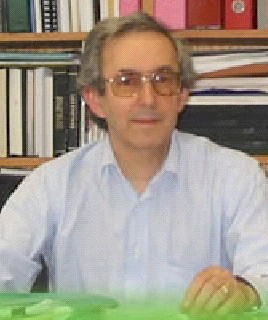Modelling and Simulation in Chemical Engineering:
Tools for Process Innovation
Prof. Alirio Rodrigues, University of Porto
The Chemical Engineering Science movement has been a
paradigm of our discipline for about four decades and served well in
solving problems at various scales, from micro to macro scales. Ultimately,
as Professor R. Sargent pointed out, it would be better if translated in
“Scientific Engineering”. In this talk I will present a few examples of
Innovation as a combination of Science (Concept), Technology and Process/Product,
not necessarily implemented in this order. The first example is Perfusion
Chromatography for proteins separation. It is based on the concept of
“diffusivity augmented by convection” in large-pore adsorbents and on the
technology of fabrication of those packing materials (polymeric/composite
beads or monoliths). The modelling at the particle scale illustrates how
the foundation of a process can be condensed in a simple equation relating
the augmented diffusivity, the diffusivity and the enhancement factor
which is a function of the intraparticle Peclet number. The second
example- Simulated Moving Bed- is based on a concept developed to overcome
the difficulties in implementing True Moving Bed processes in fluid/solid
separations (Broughton and Gerhold, UOP). The original technological
contributions come from materials (selective adsorbent zeolite) and rotary
valve to simulate the solid movement while the solid remains fixed by
switching the inlet/outlet ports periodically in the direction of fluid
flow. The process is known for more than thirty years in petrochemical
industry (Parex process) but recently became a key technology for chiral
separations in pharmaceutical industry. Modelling/simulation tools provide
sound basis for design/operation of such units by using the concept of
“separation volume”. The third example is taken from the area of
multifunctional, hybrid, cyclic processes. The SMB technology is extended
to the reaction/separation in the same unit (synthesis of diethylacetal in
SMBR) and Pressure Swing Adsorptive Reactors (PSAR) for hydrogen
production by methane steam-reforming coupled with carbon dioxide
adsorption is presented. In solving mathematical models reference is made
to available/commercial packages (PDECOL, COLDAE, DASPK, gPROMS) or
home-made packages for MFEM (1D/2D).
 Alirio
Rodrigues graduated in ChE, Univ Porto in 1968 and is a Dr-Ing from
University of Nancy, 1973. He is currently a Professor of Chemical
Engineering at the Faculty of Engineering of University of Porto and
Director of the Laboratory of Separation and Reaction Engineering of the
same University. He is a referee of over 10 scientific journals and a
member of the editorial board of Adsorption, The Chemical Engineering
Journal, Separation Science and Technology, and Separation and
Purification Technology. His current research interests concern the
development and understanding of cyclic separation processes: pressure/vacuum
swing adsorption (PSA/VSA), simulated moving bed (SMB) and parametric
pumping, and the production of high added-value products. He as over 200
refereed publications.
Alirio
Rodrigues graduated in ChE, Univ Porto in 1968 and is a Dr-Ing from
University of Nancy, 1973. He is currently a Professor of Chemical
Engineering at the Faculty of Engineering of University of Porto and
Director of the Laboratory of Separation and Reaction Engineering of the
same University. He is a referee of over 10 scientific journals and a
member of the editorial board of Adsorption, The Chemical Engineering
Journal, Separation Science and Technology, and Separation and
Purification Technology. His current research interests concern the
development and understanding of cyclic separation processes: pressure/vacuum
swing adsorption (PSA/VSA), simulated moving bed (SMB) and parametric
pumping, and the production of high added-value products. He as over 200
refereed publications.